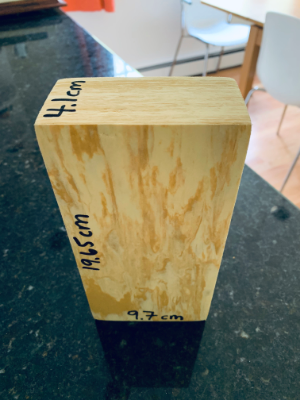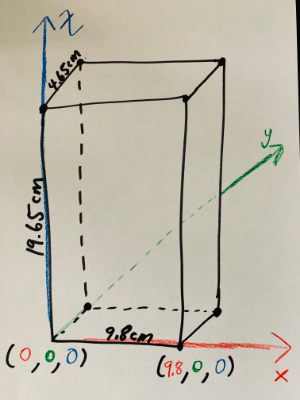3D Modeling with AR: Part 1
Necessary app(s) installed already? If so, you can start at 2:51.
QUICK ACCESS TO TINY URL (0:56 - 1:22 in screencast)
Math Teachers:
Here is the first in a multi-part series re: Using GeoGebra 3D with Augmented Reality to actively engage students with 3D modeling.
3D modeling is not "...just for the honors kids." Nor is it something older students should do if they decide to take Calculus 3 (Multivariable Calculus). 3D Modeling is for ALL STUDENTS. And GeoGebra 3D app provides a user-friendly platform on which they can do so.
And AUGMENTED REALITY provides students with the means to test the ACCURACY of their models by virtually superimposing their constructions over 3D objects in their environment.
GOAL 1: Construct this prism in GeoGebra 3D & Test in AR

The key with introducing students to modeling simple 3D solids is to choose an ideal position for one of its faces. And to do this, we need to choose convenient locations for 2 of the vertices.
Here's a general conversation I've had with many of my Ss in the past (re: this).
Me: "What's the easiest coordinate number to work with?"
Students: [Most reply either] "1" [or] "0".
Me: "Of those two, which is usually easier to work with?"
Students: "0".
Me: "Why"?
Students: "Makes doing algebra a lot easier".
Me: "Okay... well..., I want you to now build this prism in GeoGebra's 3D app [rectangular coordinate system that's shown] so that we maximize the number of times zero is used a coordinate."
And off they go.
There's 3 main ways students can position it so (0,0,0) is used as one corner (vertex).
One setup is shown below.
ONE POSSIBLE SETUP. What are the coordinates of its other 6 vertices?

Here's what this setup looks like after it's built in GeoGebra 3D
NOW TO EXPLORE IN AUGMENTED REALITY:
1) Open up GeoGebra 3D app on your device.
2) Go to the MENU (horizontal bars) in the upper left corner. Select OPEN.
In the Search GeoGebra Resources input box, type w34uzfby
(Note this is the resource ID = last 8 digits of the URL for this resource.)
3) Reposition this prism (if necessary) on your device.
4) Tap the AR button (lower right). Hold your device to the floor. When the square appears, TAP it.
You can now explore this resource in Augmented Reality.